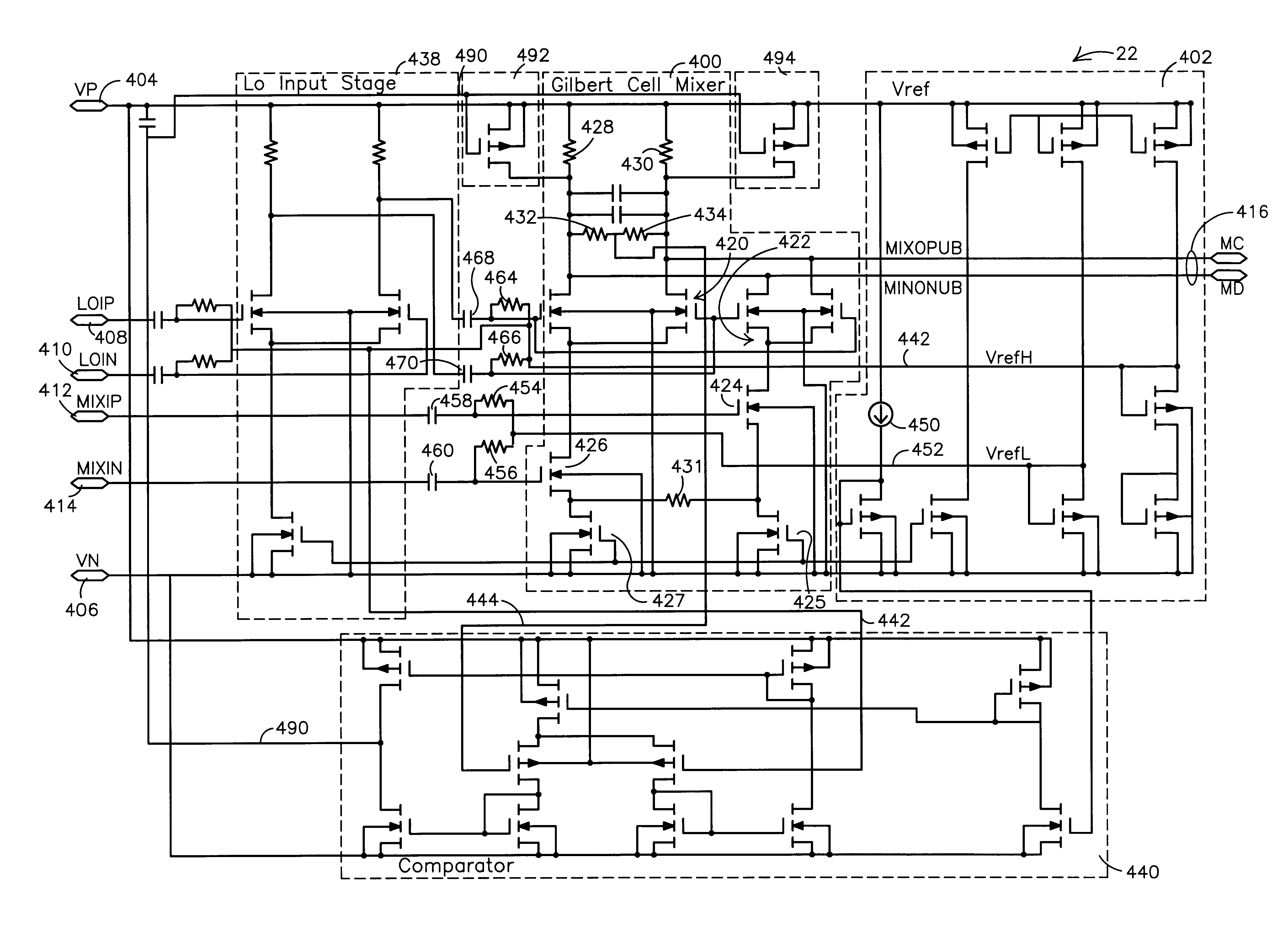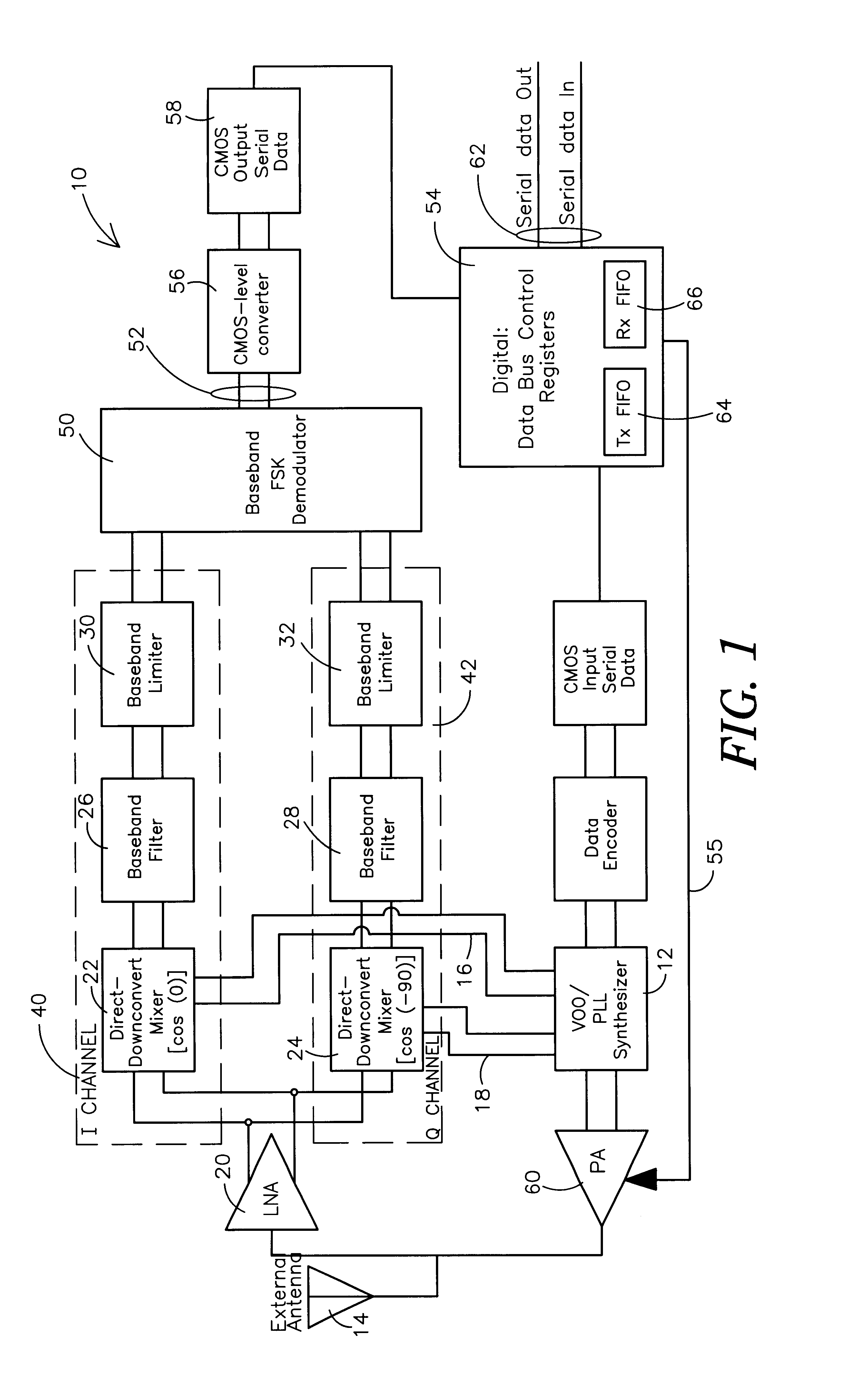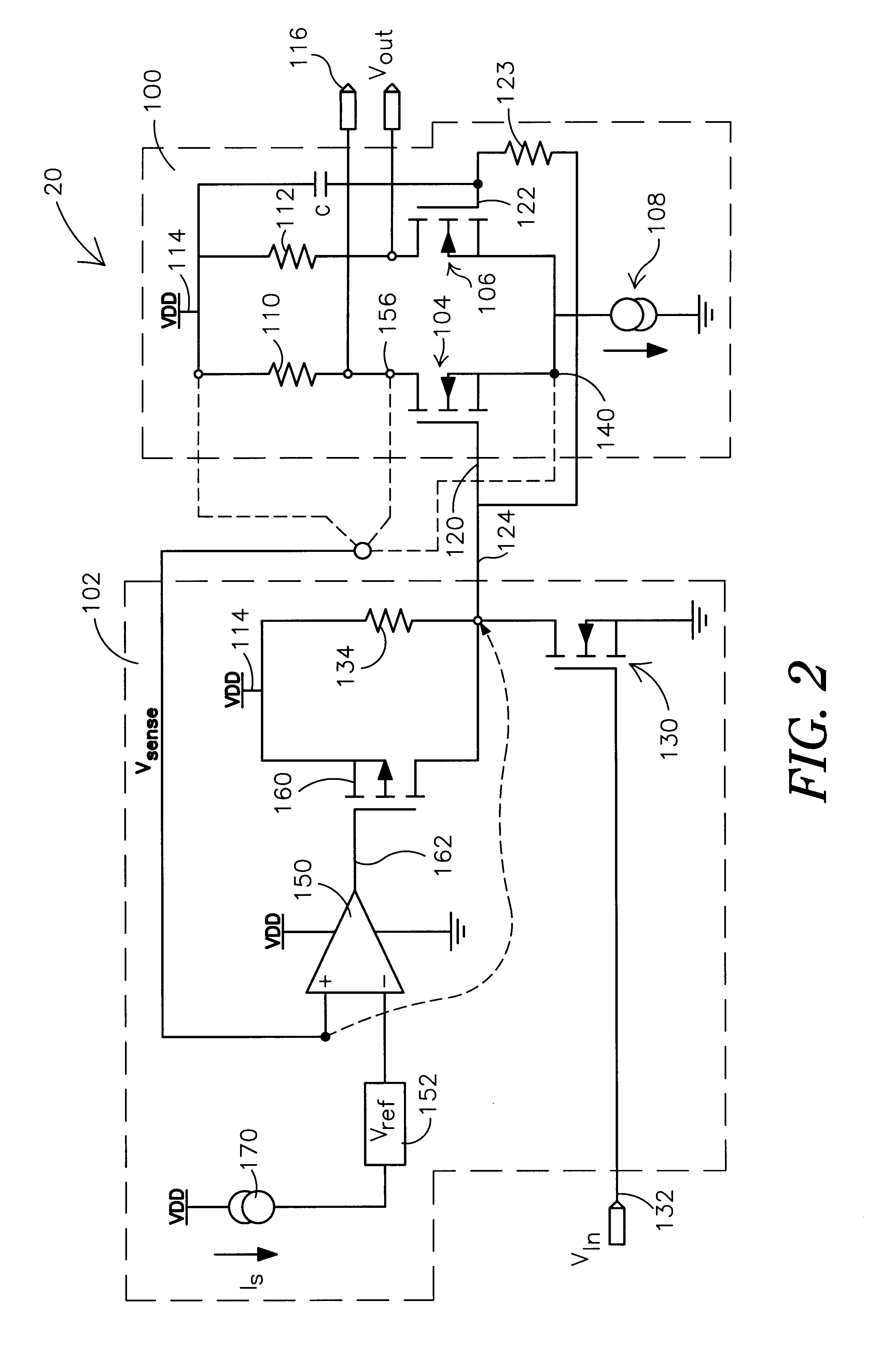Compensation mechanism for compensating bias levels of an operation circuit in response to supply voltage changes
a technology of bias level and operation circuit, which is applied in the field of analog circuits, can solve the problems of increasing the dynamic range of the amplifier powered by the battery, the voltage provided by the battery tends to degrade, and the amplifier may no longer operate in the linear range, so as to increase the resistance, decrease the bias level, and increase the resistance
- Summary
- Abstract
- Description
- Claims
- Application Information
AI Technical Summary
Benefits of technology
Problems solved by technology
Method used
Image
Examples
Embodiment Construction
[0032]The present invention provides a compensation circuit that can dynamically compensate bias levels of selected devices of an operational circuit (e.g., amplifier) in response to variations in the supply voltage. The compensation circuit changes the bias levels in view of variations in the supply voltage so that functionality and performance of the operational circuit are substantially maintained.
[0033]FIG. 1 is a block diagram of an integrated direct down conversion Narrowband FSK Transceiver 10 that incorporates the present invention. The Narrow Band FSK Transceiver 10 includes both transmit and receive functions, preferably on a single substrate with minimal use of external components. In use, the Narrow Band FSK Transceiver 10 provides a half-duplex transceiver radio data link capable of statistical frequency-spread transmissions.
[0034]Two or more Narrow Band Transceivers 10 can be used to form a wireless data communication network. Because each Narrowband FSK Transceiver 10...
PUM
 Login to View More
Login to View More Abstract
Description
Claims
Application Information
 Login to View More
Login to View More - R&D
- Intellectual Property
- Life Sciences
- Materials
- Tech Scout
- Unparalleled Data Quality
- Higher Quality Content
- 60% Fewer Hallucinations
Browse by: Latest US Patents, China's latest patents, Technical Efficacy Thesaurus, Application Domain, Technology Topic, Popular Technical Reports.
© 2025 PatSnap. All rights reserved.Legal|Privacy policy|Modern Slavery Act Transparency Statement|Sitemap|About US| Contact US: help@patsnap.com



